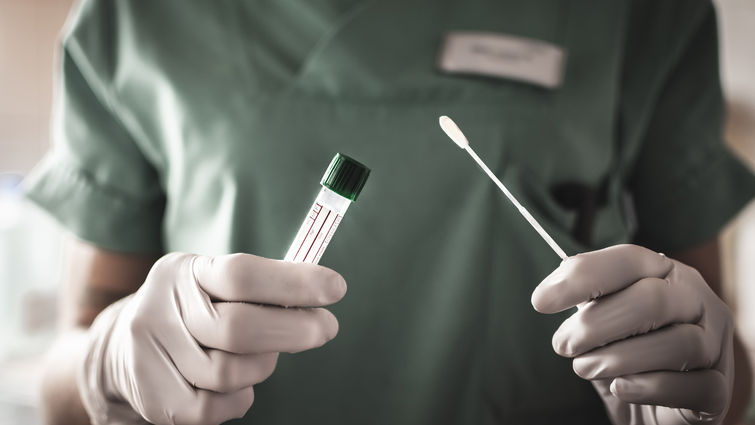
PCR tests
As the new coronavirus continues to spread through the United States, private corporations and public health researchers have been creating and developing several test methods — some of which can detect the virus within minutes to hours.
The different tests fall into two categories: polymerase chain reaction-based tests (or PCR-based), which test for the presence of the virus and serologic tests to check for a patient’s prior exposure to the virus.
In an interview, Paul C. Herrmann, MD, PhD, a pathologist and chair of the department of pathology and human anatomy at Loma Linda University School of Medicine, discussed what you should know about these tests, when you should consider being tested and how the tests work. “Knowing more about testing can help ease anxiety and provide additional understanding during this time of uncertainty,” he says.
How they work
PCR tests
Most PCR-based tests for the new strain of coronavirus involve swabbing a person’s respiratory system to collect virus-containing secretions with a nasopharyngeal swab. The swab, which looks similar to a long cotton swab, is gently inserted through the nose until it reaches the area near the back of the throat where the air passages from mouth and nose meet.
Using the swabbed sample, a PCR-based test looks for the presence of genetic material contained within the virus. “This test, based on the PCR, detects genetic information within the virus, which is RNA in this particular virus,” he says. “If the genetic material is present, the virus is presumed present.”
Serologic tests
Tests based on a patient’s immune status fall into the category of serologic testing, which tests for the presence of antibodies against the virus contained in the patient’s blood. “This test looks for the presence of an immunoglobulin, which is a molecule that your body has made to fight off a foreign substance — in this case, the novel coronavirus,” he says.
Unlike the PCR tests, which determine the actual presence of the virus, the serological tests examine the immune system to see if the person has ever experienced the virus within their system.
Who should be tested
If someone is considering being tested, Herrmann recommends they ask themself if the outcome of the test will change their course of action. If not, it may make sense to postpone the test. “If a patient anticipates healing at home — whether it’s from COVID-19, the common cold, the flu or another respiratory illness — the actions to be taken should be the same,” Herrmann says. Isolation from as many people as possible to avoid spreading the illness plays a crucial role in helping protect the health of everyone, regardless of the cause of respiratory illness. Herrmann also recommends calling your primary care physician if you have non-life-threatening concerns or questions. “They can help you make the best decision for yourself and your health,” he says.
In some settings, testing is important. Testing a patient can help providers determine how best to care for the individual. For instance, it helps the healthcare team decide which patients they can place in a room together safely and allow healthcare workers to ensure they’re taking steps to protect themselves. A serologic test can also tell healthcare workers if their patient is building an immune response to the virus.
If you are tested and receive a positive test result, Herrmann says the next step is usually the same. “Unless you have some complication with it, you’ll likely be sent home and be asked to isolate,” Herrmann says. “It shouldn’t matter which virus the person is infected with — the response should be the same: stay home and take care of yourself until all the symptoms resolve. Staying home for the recommended isolation period can be the best possible way to stop the disease spread.” If symptoms worsen, consult your primary care practitioner immediately.
If you receive a negative test result, it doesn’t necessarily mean you do not have COVID-19. It also does not mean you won’t get the virus in the future. Those tested very early in the disease process may appear negative even though they have the virus, and those who test negative, but are then exposed to the virus later, may still become infected.
If you think you have COVID-19
Call your primary healthcare provider if you suspect you may have COVID-19. Discuss with them the best course of action. “If there is no immediate threat, it’s not recommended that people come in for testing unless directed by a healthcare provider familiar with their situation. Visiting a testing site unnecessarily brings its own risks of exposure to the virus,” Herrmann says.
Loma Linda University Health providers are committed to ensuring all patients have access to the care they need during this stressful time. Patients can schedule virtual or telephone visits by visiting MyChart or calling their provider. You can also visit Loma Linda University Health’s coronavirus website to see facts and preventative tips to keep you and your family healthy.
